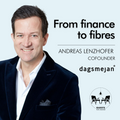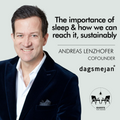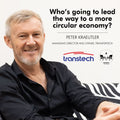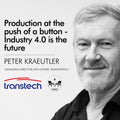Gendered Clothing - Avoiding a Fashion Faux Pas
Everyone knows that there was Prince during the ’80s.
Kurt Cobain wore a dress on the cover of The Face in 1993.
And, of course, there was David Bowie.
Such icons pushed and blurred the boundaries of gender-based-norms within the world of fashion, and were not the first to do so. What’s for sure is that they certainly won’t be the last either.
Before we even introduce ourselves verbally, our clothing does the talking for us.
As sensitive as we are to the body language of a person, and their overall energy, their clothing can speak multitudes. Fashion, as the art-form that it is, can therefore become a means of inclusion - by providing a sense of connection, of belonging, of being part of something that is larger than ourselves. It can also distance and cut off - excluding those who do not meet the requirements for inclusion. The political commentary of fashion thereby fuses the image and aesthetic with a commentary on the power that this concept can have over people.
image is at the heart of the political
“Not all art is political, but all politics are aesthetic,” says Charine Roitfield. “At their heart, political ideologies, systems, and constitutions are aesthetic systems: multimedia artistic environments. The image is at the heart of the political."
The struggle has become an endless process of images battling, reversing, erasing, and replacing other images," she continues. "Political struggle, then, is an inherently visually productive process. It is also visual to a large degree: It is a struggle over presence, over visibility.” Shared aesthetic choices—in clothing, makeup, hair, or styling— thereby create searing images and communicate the power and the promise (and, of course, the threat) of unification, especially in the realm of gender exploration.
A myriad of terminology has recently arisen in the fashion world
A myriad of terminology has recently arisen in the fashion world’s attempts to serve this not-exactly-new but previously-under-serviced demand.
“Gender fluid,” “non-conforming,” “non-binary,” “co-ed,” “androgynous” - this is just a taste of the terminology reviving this sphere of the fashion industry as it opens up.
The distinction between these terms is difficult to gauge. Confusing to an unfamiliar eye, you’d be forgiven for not fully understanding a topic as relevant and sensitive as this - but it really starts to become real as we see designers from across the board taking this issue to heart and using their creations to take a powerful stand.
A myriad of terminology has recently arisen in the fashion world’s attempts to serve this not-exactly-new but previously-under-serviced demand.
“Gender fluid,” “non-conforming,” “non-binary,” “co-ed,” “androgynous” - this is just a taste of the terminology reviving this sphere of the fashion industry as it opens up.
The distinction between these terms is difficult to gauge. Confusing to an unfamiliar eye, you’d be forgiven for not fully understanding a topic as relevant and sensitive as this - but it really starts to become real as we see designers from across the board taking this issue to heart and using their creations to take a powerful stand.
What is clear is that gender-nonconforming fashion is not a trend
It is an authentic experience that needs to be recognized and celebrated as such.
THE GUESTLIST’s Young Talent Collaboration with Linus Leonardsson has added another layer to this ever-evolving, and indeed very exciting, realm of the industry.
It takes time to change people's perceptions
Speaking to Italian Vogue Magazine, Linus revealed his own initial struggles of navigation within such a sphere. Growing up in a small town in Sweden influenced him in many ways. “As a teenager,” he said, “I was insecure and had many fears, which influenced my way of creating in the beginning. I was afraid of showing off and being accused of being too feminine. I had to deal with this situation in the school years. I come from a rural area of Sweden where the concept of gender equality did not exist then… Today, young people are much more awake and socially active, while 10 years ago they were not yet aware of how certain gestures and behaviors could have consequences on others.”
Linus went on to outline that he calls his designs ‘gender non-conforming’ instead of ‘genderfluid.’
The reasoning behind this is simple.
“I do not necessarily want to cut traditional gender roles off, but I want to open fashion up to the entire spectrum in-between and outside of the two traditional gender identities,” outlines Linus.
YOUR CLOTHING CHOICES BECOME A POLITICAL STATEMENT
“Nonconforming” to Linus, specifically means refusing to adapt to the system that society tries to impose. Therefore, it means that your clothing choices become a political statement. The difference doesn’t stop there. “From a conceptual point of view,” he continues, “gender-fluid clothes are different from what I make. They are similar to the eye, but the context is different.”
This valourous way of interpreting gender as a concept is something that has not been lost on the public eye, and is nurtured through his ponchos, blazers and jackets designed by Linus Leonardsson for THE GUESTLIST.







